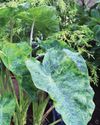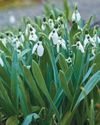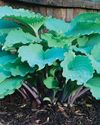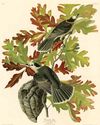
IN A YARD in which I've been puttering and landscaping for nearly twoscore and ten years, I finally must admit that there are a couple handfuls of flora that I wish I'd never planted or passively allowed to colonize. This realization was thrust upon me as two recently deployed military sons decided to settle back in Little Rhody, both within two miles of the family homestead.
Abby and I never expected such good fortune from the soldier and sailor who had truly traveled the world and seen and done lots of interesting things. The boys and their wives have nice, neat yards in which their young daughters can play. These yards are more or les blank slates, as mine was at one time, and I have been challenged to come up with planting plans (somewhat cautiously by one boy and a bit more enthusiastically by the other).
Though honored and flattered to be chosen to help with such extensive landscaping, I am also slightly intimidated. I don't want to mess up.
Mistakes that I made in my yard are my mistakes. Mistakes that I may make in their yards are also my mistakes. But there is a big difference.
That awareness initiated some extensive reflection on my part and as a result I have come up with a list of plants to be dealt with cautiously.
I must say that there are good reasons for some people to choose most of these plants for some locations.
And sometimes, these plants do not GREG COPPA is a writer, traveler and life-long lead to negative outcomes, or at least they don't do so for a very long time.
(There is so much gardening knowledge to be passed on to the next generation and the next!) So below are my "plants of concern." I would not grow them in my yard if I had it to do all over again. I recommend that anyone who wishes to use them do additional research and then try to envision how these plants may develop as they grow and mature in their own yards.
ENGLISH IVY
This story is from the November - December 2022 edition of Horticulture.
Start your 7-day Magzter GOLD free trial to access thousands of curated premium stories, and 9,000+ magazines and newspapers.
Already a subscriber ? Sign In
This story is from the November - December 2022 edition of Horticulture.
Start your 7-day Magzter GOLD free trial to access thousands of curated premium stories, and 9,000+ magazines and newspapers.
Already a subscriber? Sign In

Pot It Up
Shake up the containergarden with theseNorth America –native perennials

THE GARDEN PATH TO PERDITION
I WAS CRUISING RIGHT ALONG, feeling okay about myself, when I came across a list of the Seven Deadly Sins.

A Productive PATIO
Tiny fruit, vegetable and herb plants help gardeners maximize any sort of growing space

TROPICAL FUSION
A FUSS-FREE APPROACH TO USING BOLD TROPICAL PLANTS IN ANY TEMPERATE GARDEN

WINTER READING
Pass the time with any of these inspiring books

SENSING A PATTERN
Greg Coppa reflects on an odd weather year and what continued warming may mean for his Rhode Island garden

TOP-PRIZE PERENNIALS
A foliage masterpiece for shade and a late bloomer for sun

MARK WESSEL
What's new for fruit and vegetable gardeners?

KINGS OF THE NORTHERN FORESTS
A look at the trees, shrubs and perennial plants that bolster life in Ecoregion 5

PROJECT FEEDERWATCH
Gardeners can help scientists know just where the birds are in winter